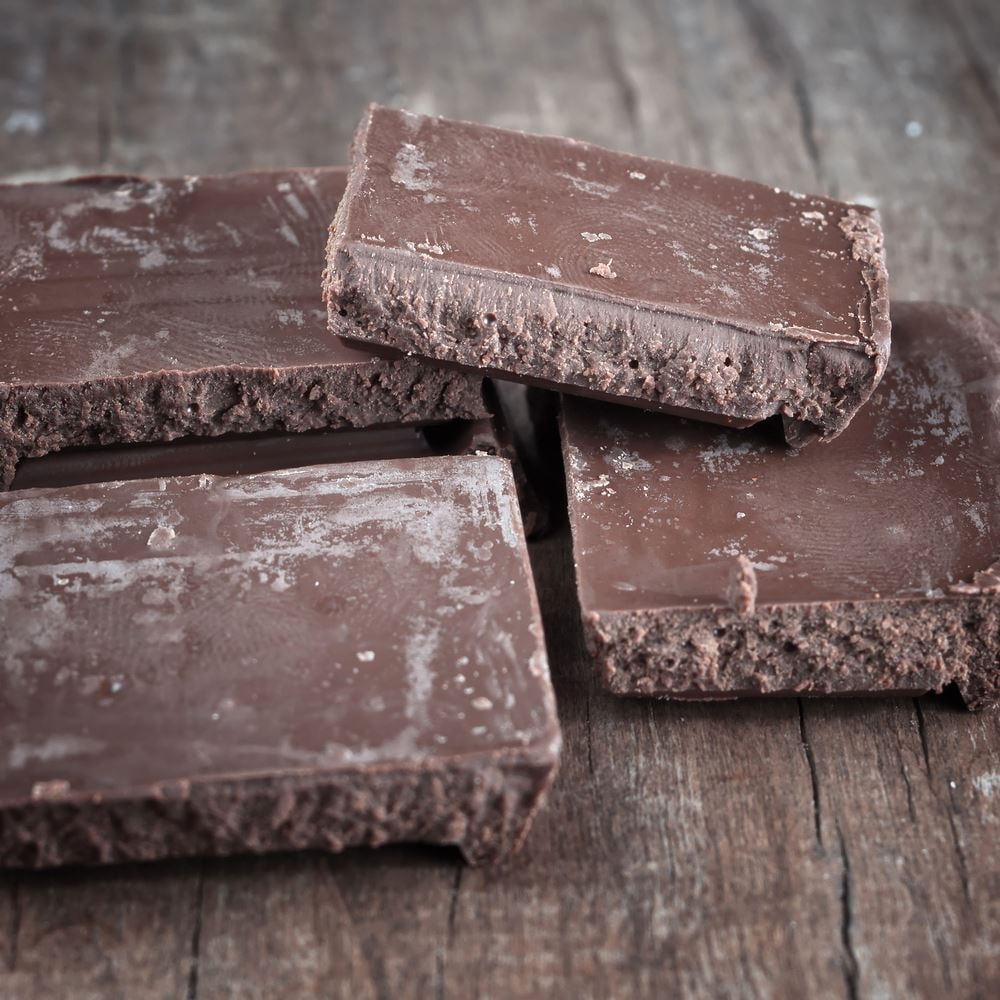Why Does Chocolate Turn White?
Many chocolate lovers may have noticed a white coating on the surface of their favourite treat, leading to concerns about its safety or freshness. While this appearance might resemble mould, rest assured that it is not harmful to health and has a scientific explanation rooted in the composition and storage of chocolate.
The phenomenon, commonly referred to as “chocolate bloom,” occurs when chocolate is not stored properly. There are two primary types of bloom: fat bloom and sugar bloom. The white coating typically seen on chocolate is most often caused by fat bloom.
Fat bloom happens when the cocoa butter, a natural fat derived from cocoa beans, migrates to the surface of the chocolate. This migration is usually triggered by improper storage conditions, such as fluctuations in temperature.
When chocolate is exposed to warmer temperatures, the cocoa butter melts slightly. Upon cooling, it re-solidifies on the surface, leaving a whitish or greyish appearance. While it may affect the texture and visual appeal of the chocolate, fat bloom does not compromise its safety or nutritional value.
Interestingly, the presence of fat bloom can be seen as an indication that the chocolate contains genuine cocoa butter, rather than substitutes. High-quality chocolate made with real cocoa beans is more likely to experience this phenomenon. This serves as a reassuring sign for consumers who value authenticity in their chocolate products.
The second type, sugar bloom, occurs when chocolate is exposed to moisture. When water comes into contact with the surface of the chocolate, it dissolves some of the sugar. As the water evaporates, the sugar recrystallises, leaving a grainy, white residue. Like fat bloom, sugar bloom does not pose any health risks but may alter the texture and flavour of the chocolate.
To prevent chocolate from turning white, it is essential to store it under stable conditions. Ideally, chocolate should be kept in a cool, dry place, away from direct sunlight and temperature fluctuations. Refrigeration is not recommended unless necessary, as it can introduce moisture that may cause sugar to bloom. The ideal storage temperature for chocolate is between 15°C and 20°C, with a humidity level of less than 50%.
In conclusion, the white coating that sometimes appears on chocolate is a natural result of fat or sugar bloom and does not indicate spoilage or mould. Proper storage practices can help maintain the chocolate’s visual and textural qualities, ensuring an enjoyable experience with every bite. For those who encounter bloomed chocolate, rest assured that it is safe to eat and still retains its delightful flavour.

